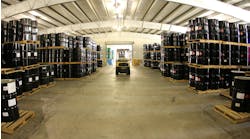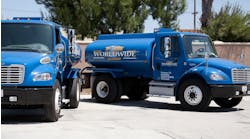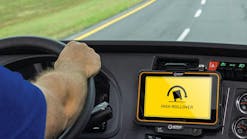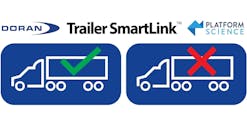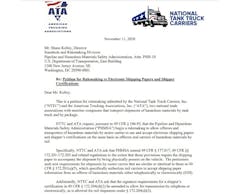The National Tank Truck Carriers Association (NTTC) is staying active on the advocacy front, despite the challenges created by a global pandemic and divisive presidential election.
The association recently joined American Trucking Associations (ATA) to petition federal hazardous materials regulators to “without delay” develop rulemaking that allows motor carriers to use and accept electronic shipping papers and certifications for hazmat shipments.
The trucking industry organizations formally presented their plea in a nine-page Nov. 11 letter to the U.S. Department of Transportation’s Pipeline and Hazardous Materials Safety Administration (PHMSA), asking the agency to begin work on a regulation that provides them with the same opportunity to use electronic documents currently enjoyed by hazmat rail carriers.
“Here we are heading into 2021, and the way the regulation currently is written by PHMSA is antiquated, because it’s all based on paper copies,” said Ryan Streblow, acting NTTC president. “You must have that bill of lading, that shipping document, within arm’s reach of the cab. And as much as we’re using technology, both with drivers and the equipment, in the industry, it just makes sense to leverage that technology to improve safety and efficiency within our operations.”
Streblow said electronic shipping papers in over-the-road hazmat transport is an issue raised by ATA and NTTC members, who are looking for ways to continue improving processes related to safety and efficiency. NTTC’s membership alone consists of more than 600 companies that specialize in bulk transportation services utilizing cargo tanks in North America.
“PHMSA currently allows rail carriers to accept shipping paper information either telephonically or electronically from an offeror of hazardous material,” Streblow and Dan Horvath, ATA’s vice president of safety policy, argued in the letter. “The petitioners request that PHMSA extend this option to shipments by highway transport as well.
“Specifically, NTTC and ATA ask that PHMSA amend 49 CFR § 177.817, 49 CFR §§ 172.201-172.205 and related regulations to the extent that those provisions require the shipping paper to accompany the shipment by being physically present on the vehicle. The petitioners seek new requirements for shipments by motor carrier that are similar or identical to those in 49 CFR § 172.201(a)(5), which authorizes rail carriers to accept shipping paper information from an offeror of hazardous materials either telephonically or electronically.”
Streblow said PHMSA seemed to agree with NTTC and ATA that reviewing the issue makes sense, and, they maintained, the matter was made more urgent by the need for companies to develop procedures that limit human-to-human interactions during the pandemic to help slow the spread of COVID-19. Yet PHMSA indicated in a recent list of frequently asked questions related to COVID-19 on its website that, even during the pandemic, shipping papers must be in hard copy form for hazmat transported by highway.
“Furthermore, a driver of a motor vehicle containing hazardous material and each carrier using such a vehicle, shall ensure that the shipping paper is readily available to, and recognizable by, authorities in the event of an accident or investigation,” PHMSA stated in its posting.
In response, NTTC and ATA pointed out that shippers and carriers of general freight by commercial motor vehicle over the years have developed protocols for the electronic interchange of shipping documents. “Companies routinely use electronic data interchange capabilities to transfer information about the nature and count of products being shipped, the date and time of pickup and delivery, and related commercial and legal language,” associated leaders said in the letter. “Many of these commodities are time and/or security sensitive, and electronic technology has facilitated the safe and efficient transport of these products.”
However, there are potential challenges for the larger trucking industry to consider regarding electronic shipping papers for hazmat. For one, it’s easier for bulk carriers typically hauling one product in a tank trailer to digitize bill of lading information than for a dry van or LTL carrier hauling multiple hazmat products. And there are situations in which physical copies still may be necessary, especially in rural areas with limited connectivity.
“The association is not asking for electronic shipping papers to replace paper copies,” Streblow emphasized. “We’re looking to have them accepted as another form of documentation. We understand that there are a lot of operations out there that still manage those paper documents, for various reasons, but there also are a lot of operations … that have, in fact, shifted over to using electronic versions.”
While NTTC awaits an official response to its petition, Streblow said he will continue to work on the issue with carrier members and association partners, with NTTC’s focus on improving communication with firefighters and other emergency personnel who rely on critical bill of lading information when responding to a hazmat incident.
“The reason you have that documentation with you is that in the unfortunate event of an emergency incident—a rollover or crash, or something of that nature—we want to make sure that first responders are on the same page,” Streblow said. “Now yes, there are placards and the ERG (Emergency Response Guidebook), and the intent is for that to be there, but a lot of times there is proprietary information about the makeup of a particular chemical in a tank trailer, and we want to be able to convey that information, and how that chemical reacts in a spill.”
And, as Streblow points out, grabbing documents isn’t always a priority in an emergency situation, and many carriers already require drivers to keep their cell phones, where digital documents are easily accessed, in their pockets.
“In a real-world situation, if there is an incident where a driver needs to exit the vehicle in a timely fashion, reaching for a bill of lading typically isn’t on the top of their mind, even with a professional driver,” he said.
“Their safety or the safety of somebody else is the focus.”
